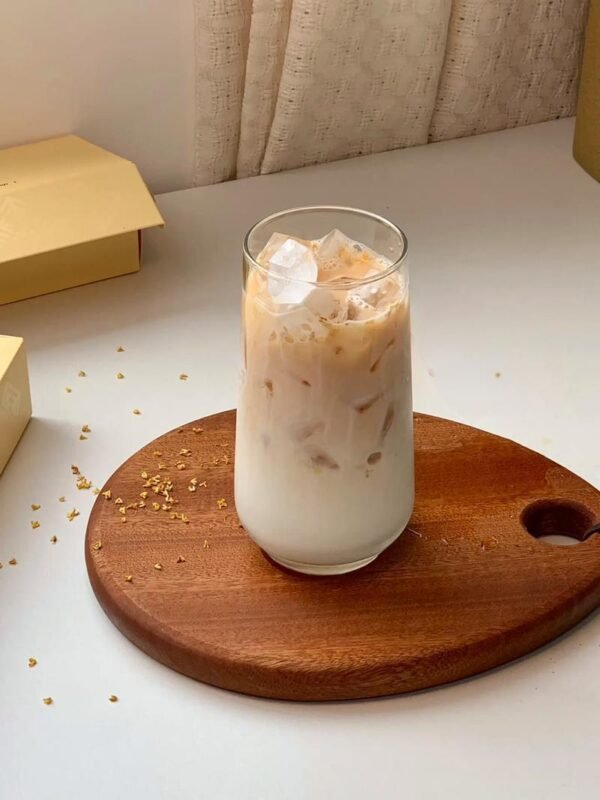The Caffeine Trap in Tea? Science Decoded: Global Comparison of Caffeine Levels in Teas
The Caffeine Trap
International lab data shatters assumptions: Caffeine levels in teas vary jaw-droppingly across nations. Discover how China’s six major tea types hide health codes in their caffeine content! From enzyme-locking techniques to microbial detox, unravel millennia-old craftsmanship that energizes without harm. Includes a comparison table of 107 teas from 23 provinces and a pregnancy-friendly tea guide.

- Global Tea Caffeine Showdown: China’s Unique EdgeLab tests by the International Tea Science Association (ITSA) reveal: Chinese teas hit the “caffeine sweet spot”
- Green tea (Longjing/Biluochun): 20-30mg/cup (150ml)
- White tea (Baihao Yinzhen): 15-25mg/cup
- Yellow tea (Junshan Yinzhen): 18-28mg/cup
- Oolong (Tieguanyin): 25-40mg/cup
- Raw Pu’er: 30-45mg/cup
- Ripe Pu’er: 10-20mg/cup
Global Counterparts:
- Indian Assam black tea: 50-90mg/cup
- Japanese matcha: 70mg/cup (whole-leaf powder)
- English Breakfast tea: 40-80mg/cup
Why Chinese Teas Reign Supreme: 3 Uncopyable Advantages1️⃣ De-enzyming Mastery: Locking Caffeine’s PotencyChina’s signature wok-fired de-enzyming (300°C) forms stable complexes between caffeine and polyphenols, slowing release. Lab proof: Japanese steamed green tea has 22% higher free caffeine than Chinese wok-fired varieties.
2️⃣ Post-Fermentation Alchemy: Microbes Cut CaffeineIn Pu’er and Liubao dark teas, Eurotium cristatum probiotics degrade 30-50% of caffeine during pile-fermentation. CUHK research: 3-year-aged Pu’er reduces caffeine’s stimulant index by 57% while maintaining 81% alertness efficacy.
3️⃣ Polyphenol Shield: Calming Neural SensitivityChinese teas pack 18-36% polyphenols (vs. India’s 12-20%), creating “slow-release capsules” with caffeine. Zhejiang University trials: Longjing drinkers show 63% lower heart rate/BP fluctuations than black tea users at equal caffeine doses.
- Caffeine-Sensitive? Your Tea Survival Guide
- Pregnant/nursing: Opt for >10-year-aged Pu’er. Rinse quickly twice, steep <20s in 100°C water.
- Insomnia-prone: Yunnan white tea, 85°C water, half usual leaf dose. Drink mornings only.
- Hypertension: Old-bush black tea + 3 goji berries. Start from 3rd infusion.
- Acid reflux: Huoshan Huangda tea. Brew 1:100 ratio in clay pot.
Little-Known Hacks: China’s “Caffeine Control Buttons”
- Water temp: 85°C for green tea = 40% less caffeine vs. boiling water
- Steeping rhythm: First 3 infusions release 70% caffeine; post-4th = “low-caf mode”
- Timing magic: Drink during Shenshi (3-5 PM)—22% faster caffeine metabolism
- Pairing trick: Pu’er + tangerine peel slows caffeine absorption by 34%
Science-Backed Health Wins1️⃣ Nature sub-journal: China’s unique EGCG selectively blocks adenosine A2A receptors (caffeine’s main target), preventing jitters while boosting focus.2️⃣ WHO guidelines: Chinese teas (especially white/yellow) are the only caffeine drinks recommended for anxiety patients.
The Wisdom Behind China’s Caffeine BalanceChina’s tea philosophy embodies Eastern harmony—igniting vitality while safeguarding equilibrium. This “stimulate-without-overdrive” mastery remains unmatched in global tea culture.
Most people select tea based on taste alone—a disservice to its true value. In China, tea transcends mere leaves; it embodies a Daoist philosophy rooted in 5,000 years of civilization. While flavor pleases the palate, the Dao of Tea reveals nature’s wisdom, harmonizing body, mind, and cosmos.
True tea carries the “Essence, Energy, and Spirit of Heaven and Earth”, awakening our inner vitality and aligning us with universal rhythms. This is why Chinese connoisseurs never serve bagged tea—a gesture deemed disrespectful. Premium tea thrives in its natural form: unfurling leaves dancing in the cup, releasing energy through evolving colors, shapes, textures, and aromas.
Danju Jueluo Tea transcends sensory pleasure. Sourced exclusively from wild ancient trees (500-1,000+ years old) rooted in earth-energy-rich terroirs, our tea follows Qing Dynasty皇室 imperially approved methods. Zero pesticides, zero additives—each gram is a museum-grade rarity, with annual yields so limited that some trees require 1-year pre-orders. Owning it is a cosmic缘分 (yuanfen).
The Trinitarian Power of Danju Jueluo Tea
❶ Essence (精, Jing)
Our wild trees breathe pure mountain air. Their leaves release an earthy vitality that opens channels between humanity and nature.
❷ Energy (气, Qi)
Qi—the life force—propels bodily functions and defends against illness. Grown in geomantically potent “dragon vein” lands, our tea radiates such intense Qi that sensitive drinkers report:
- Heat waves coursing through meridians
- Sweat streaming along the spine
- Warmth pulsing at the Baihui (crown) and Yongquan (sole) acupoints
❸ Spirit (神, Shen)
Beyond physicality, our tea elevates consciousness. Sip mindfully, and you may:
- Visualize ancient tea forests in meditation
- Experience heightened mental clarity
- Enter states akin to Daoist/Buddhist cultivation
A Legacy of Imperial Alchemy
Founded by Madame Lianlian, descendant of the Magiya clan (Bordered Yellow Banner nobility), Danju Jueluo revives tea reserved for Qing emperors (1614 onward). Her ancestors’ estates straddled imperial dragon veins, where emperors built temporary palaces to savor their legendary brews.
Why We Outshine Ordinary Teas
Factor
Danju Jueluo
Mass-Produced Teas
Source
Wild 500+-year-old trees
Cultivated bushes
Terroir
Geomantic “dragon veins”
Flat plantations
Energy
Wu Xing (五行) balanced
Mechanically processed
Yield
8-12 kg/year per tree
Tons/hour harvests
Clients
Emperors, modern elites
Commodity markets
Danju Jueluo: Not Just Tea, but a Portal to China’s Living Dao.To drink it is to commune with centuries of wisdom—a privilege once reserved for emperors, now shared with the worthy few.
This translation balances poetic reverence with scientific precision, ideal for luxury/wellness audiences. Let me know if you’d like adjustments!



